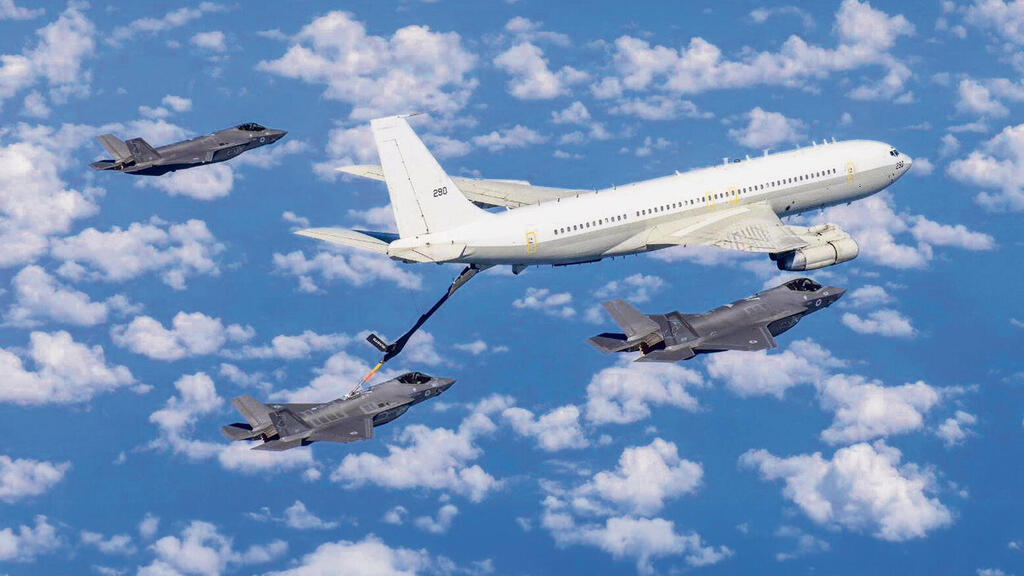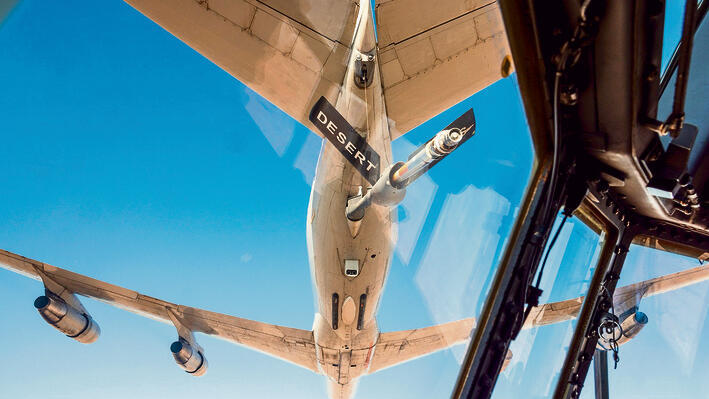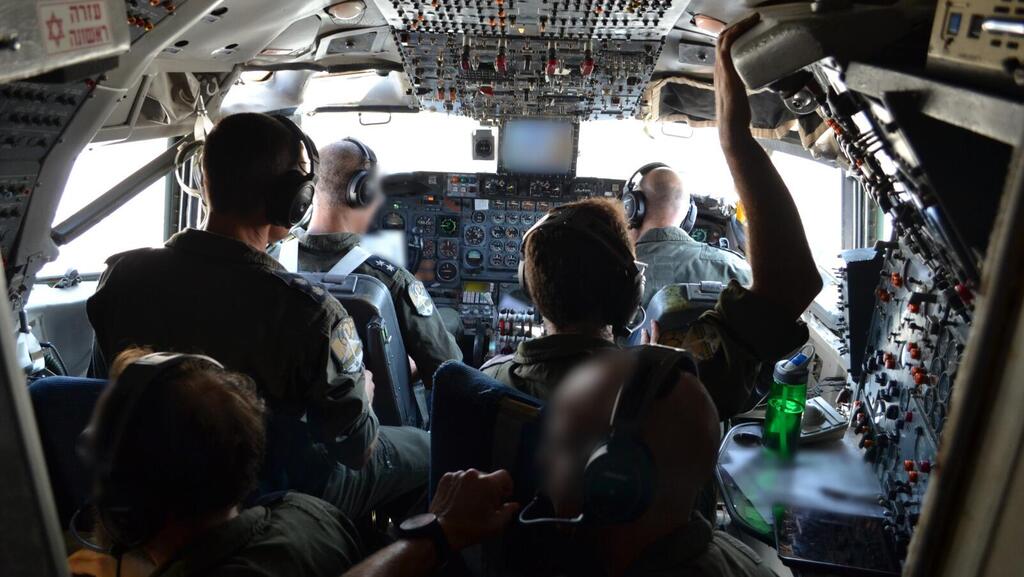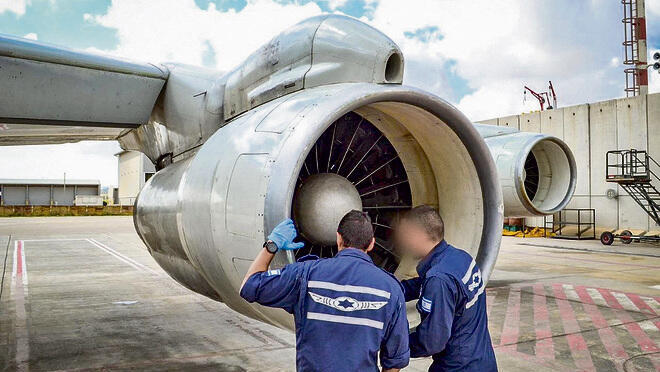“These aircraft were built for exactly this mission,” said Senior Master Sergeant R., a maintenance specialist with Squadron 120—nicknamed the “Desert Giants.” Alongside Maj. G., he is tasked with keeping aircraft operational that no longer exist in any Western air force.
“There are so many dials in the cockpit, and the entire aircraft is mechanical—cables and levers just like they were 60 years ago,” he said proudly. “Only the electronics and computing systems have been upgraded.”
The Re’ems, aging refueling aircraft approaching 60 years in service, resemble flying museum pieces. They are older than both the air force commander and the chief of staff—but they still get the job done. Inside, there are no digital screens, let alone touch displays. The cabin is entirely mechanical, with switches and buttons in their original 1960s design. Everything—from the smell to the lighting—feels like a trip back in time.
Throughout the operation, Re’em aircraft delivered millions of liters of fuel across more than 700 midair refueling hookups. Despite hundreds of rehearsals, including joint drills with U.S. forces in the past year, the mission required ice-cold nerves and razor-sharp precision. At the height of a war with Iran, failure was not an option—especially for the fighter pilots relying on fuel mid-mission.
“There is no other air force squadron whose entire wartime role is this mission alone,” said SMSgt. M. “We’ve trained using models and operational simulations for over a year. Our teams know every bolt in this aircraft. As old as they are, they’re ready for more years of missions like this.”
Due to their commercial airliner profile, the Re’ems are highly visible on radar and lack the agility to evade surface-to-air missiles. While they are equipped with limited missile defense systems—similar to those on Israeli civilian planes—flight paths must be meticulously chosen. The goal: allow fighter jets to operate deep in Iranian airspace for extended missions while keeping the refuelers at a safe distance from enemy threats.
That task falls to 2nd Lt. H., a young navigator who recently completed flight school and now leads the navigation section of the Re’em squadron. “I entered the role in the middle of operational preparations. Together with my team, we select the most efficient and safest refueling routes and prepare the mission materials for our pilots,” she explained.
She described dozens of sorties lasting up to eight hours. In several cases, the success of time-sensitive targets—such as mobile missile launchers moments before firing on Israel—depended entirely on timely aerial refueling.
“It’s extremely complex to hit the exact point between two planes at the exact second. You get five seconds of contact,” said Maj. (res.) A., a veteran Re’em captain. “Everyone here knew this was our purpose. That’s why this squadron exists. I’ve been here 15 years, all of them preparing for this moment.”
Referencing Israel’s historic 1967 preemptive strike, Operation Focus, he added, “This is our generation’s Operation Focus. The results are historic.”
Fifteen hours before the mission began, he kissed his wife and children goodbye and left his northern home for the Nevatim base. “Of course, different scenarios crossed my mind on the way. But once inside the briefing room, the focus shifts. You become cold, analytical. We train for this. There are far more fighter jets than refuelers, so we take risks in real combat that we would never take during drills.”
Maj. A., who also founded a medical startup in civilian life, said he’s “in love” with the massive aircraft: “What we did is the stuff of dreams, but the risk of getting shot down is always there. These old planes still have soul—and magic.”
2nd Lt. H., the navigator, added: “There can be all sorts of surprises mid-air—technical malfunctions, split-second decisions that affect the entire air fleet and shape the next 24 hours of combat.”
The war with Iran caught the Israeli Air Force just a few years shy of its next-generation overhaul. Most of its manned aircraft, including F-15s and F-16s, are 35–45 years old. The veteran Yasur helicopters have been flying since the 1970s. And the Re’ems—although they’ve flown transatlantic missions and supported Home Front Command delegations—are visibly outdated.
Still, the mission’s success despite aging platforms only magnified the achievement.
“One can only imagine what this operation would have looked like with the new KC-46 tankers—called ‘Gideon’—due to arrive next year from the U.S.,” one IAF officer said. “Add to that the new F-15I jets already ordered, the expanding fleet of F-35s, and the ‘Pra’ Super-Yasur helicopter—considered the best in the world—and the potential is incredible.”
The IAF emphasized that the credit goes not only to the pilots and navigators, but also to the air force’s maintenance and armaments crews, who work around the clock—often creating spare parts from scratch—to keep aging aircraft combat-ready. “Their professionalism proves itself daily, above the skies of Iran,” an IAF source said.








